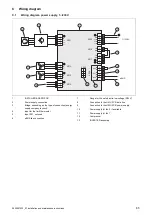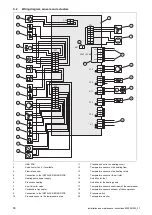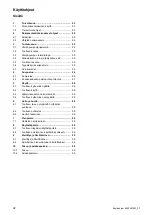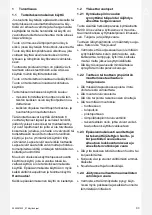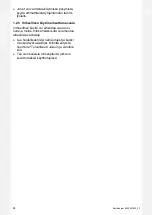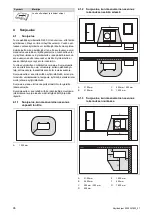
82
Installation and maintenance instructions 0020297933_07
13 Decommissioning
13.1
Temporarily decommissioning the product
1.
Switch off all of the disconnectors to which the product
is connected in the building.
2.
Disconnect the product from the power supply.
3.
If there is a risk of frost damage, drain the heating wa-
ter from the product.
13.2
Permanently decommissioning the product
Danger!
Risk of death caused by fire or explosion
when transporting units that contain refri-
gerant!
The product contains the combustible refri-
gerant R290. When transporting units without
their original packaging, the refrigerant circuit
may be damaged and refrigerant may be re-
leased. When mixing with air, a combustible
atmosphere may form. There is a risk of fire
and explosion.
▶
Ensure that the refrigerant is correctly
removed from the product transport.
1.
Switch off all of the disconnectors to which the product
is connected in the building.
2.
Disconnect the product from the power supply but en-
sure that the product is still earthed.
3.
Drain the heating water from the product.
4.
Remove the top casing, the front casing and the right-
hand side casing.
5.
Remove the refrigerant from the product.
(
6.
Note that refrigerant will continue to escape even after
the refrigerant circuit is completely drained due to out-
gassing from the compressor oil.
7.
Install the right-hand side casing, the front casing and
the top casing.
8.
Label the product using a sticker that is visible from
the outside. Note down on the sticker that the product
has been decommissioned and that the refrigerant has
been completely removed. Sign the sticker and specify
the date.
9.
Recycle the removed refrigerant in accordance with the
regulations. Note that the refrigerant must be cleaned
and checked before it is used again.
10.
Dispose of or recycle the product and its components
in accordance with the regulations.
14 Recycling and disposal
14.1
Disposing of the packaging
▶
Dispose of the packaging correctly.
▶
Observe all relevant regulations.
14.2
Disposing of the refrigerant
Danger!
Risk of death caused by fire or explosion
when transporting refrigerant!
If R290 refrigerant is released during trans-
port, a flammable atmosphere may form
when it mixes with air. There is a risk of fire
and explosion.
▶
Ensure that the refrigerant is transported
correctly.
▶
Ensure that the refrigerant is disposed of by a qualified
competent person.
15 Customer service
15.1
Customer service
You can find contact details for our customer service in the
Country specifics.


















